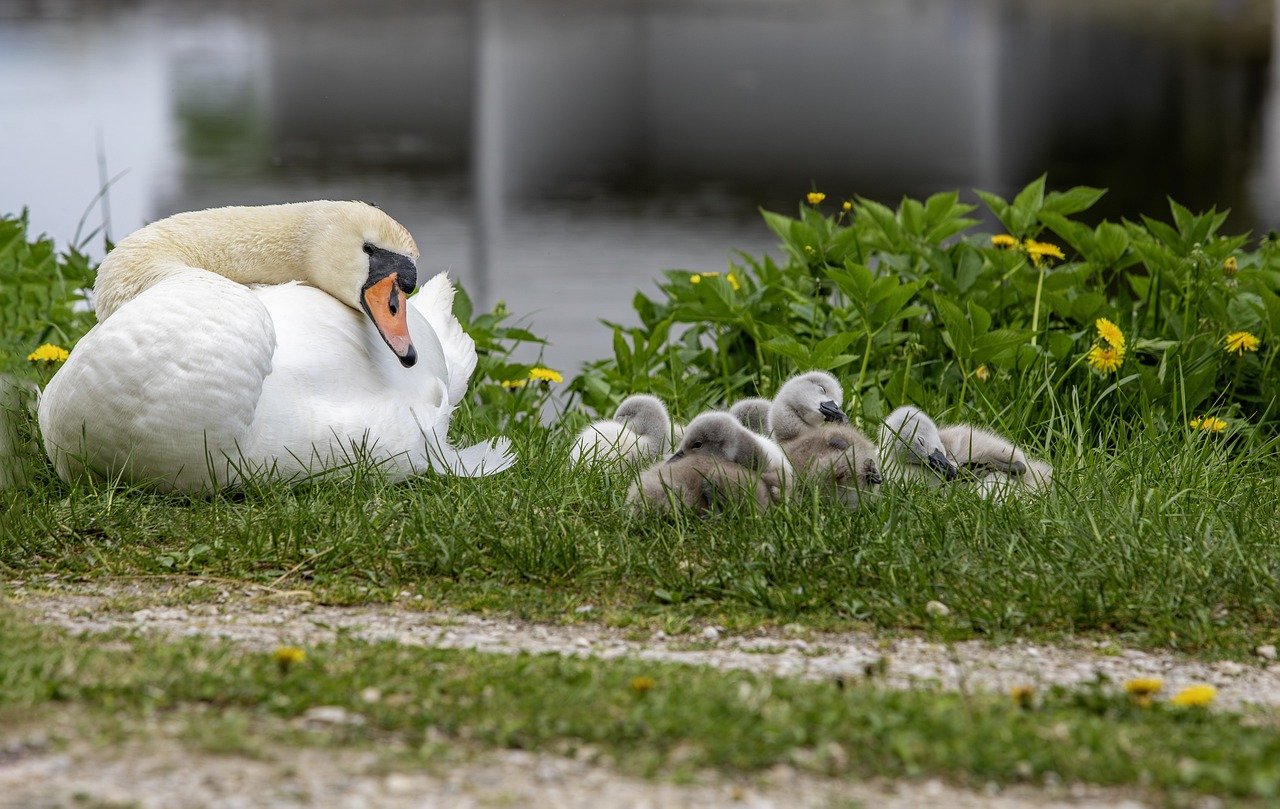The Mute Swan (Cygnus olor) is one of the most iconic and widely recognized swan species, known for its elegant appearance and graceful swimming. It is native to Europe and Asia but has also been introduced to other parts of the world.
Description
- Appearance:
- Size: Mute Swans are among the largest swan species, with a wingspan ranging from 200 to 240 centimeters (79 to 94 inches) and a body length of about 125 to 170 centimeters (49 to 67 inches).
- Coloration: They are predominantly white with a distinctive orange bill and black knob at the base of the bill. The black knob is more pronounced in males (cobs) and is used in courtship displays. The legs and feet are also black.
- Cygnets: Young swans, called cygnets, are covered in gray or brown down feathers, gradually turning white as they mature.
Habitat
- Distribution: Native to Europe and Asia, the Mute Swan has also been introduced to North America, Australia, and New Zealand.
- Preferred Environment: Mute Swans inhabit a variety of freshwater environments including lakes, rivers, ponds, and marshes. They are often found in areas with ample aquatic vegetation, which they feed on.
Behavior and Ecology
- Diet:
- Herbivorous: Mute Swans primarily feed on aquatic plants, such as algae, water lilies, and reeds. They also graze on grasses and other vegetation on land.
- Foraging: They use their long necks to reach underwater vegetation, often tipping their bodies to feed.
- Breeding:
- Nesting: Mute Swans build large nests made of reeds and other plant materials, usually in shallow water close to the shore. The nests can be quite large, and both parents contribute to its construction.
- Incubation: The female (pen) incubates the eggs for about 35 days, while the male (cob) defends the territory.
- Cygnets: After hatching, cygnets are cared for by both parents and are usually able to swim and feed themselves soon after birth.
- Behavior:
- Territorial: Mute Swans are known for their strong territorial instincts, particularly during the breeding season. They may aggressively defend their territory from other swans and intruders.
- Vocalization: While not as vocal as some other swan species, Mute Swans can produce a range of sounds including trumpeting calls and soft murmurs.
Conservation
- Status: Mute Swans are not considered endangered and have stable populations in their native and introduced ranges. However, in some areas, they are considered invasive species.
- Conservation Efforts: Management efforts often focus on controlling their populations in non-native areas where they may compete with native species or cause ecological disruption.
Observing Mute Swans
- Best Times: Mute Swans are visible year-round, with breeding activity peaking in spring and summer.
- Watching Tips: They can be observed in parks, lakes, and rivers. Their graceful swimming and striking appearance make them a favorite among bird watchers and nature enthusiasts.
Interesting Facts
- Courtship Displays: Mute Swans are known for their elaborate courtship displays, which include head bobbing, synchronized swimming, and mutual preening.
- Longevity: Mute Swans can live up to 10-20 years in the wild, with some individuals reaching even older ages in captivity.
- Adaptability: Despite their large size and specific habitat needs, Mute Swans have adapted well to human-altered environments and can often be seen in urban parks and artificial lakes.
Summary
The Mute Swan (Cygnus olor) is a majestic and widely recognized bird known for its elegant white plumage and graceful swimming. Native to Europe and Asia but also found in many other regions due to introductions, it thrives in various freshwater habitats. Its striking appearance and behaviors make it a popular subject of interest for bird watchers and nature lovers.
Visited 316 times, 8 visit(s) today
Views: 538
Subscribe to the newsletter:
